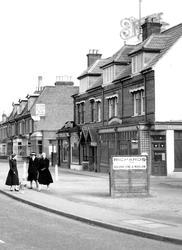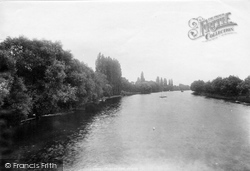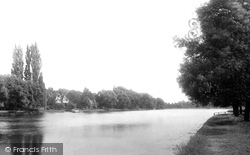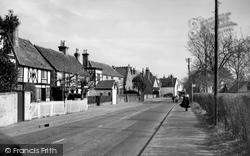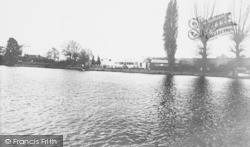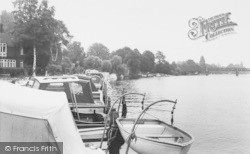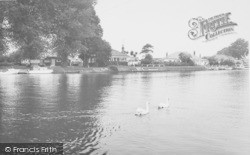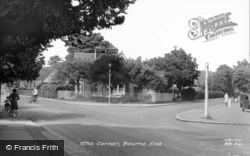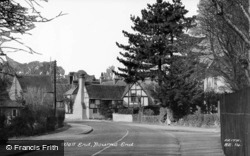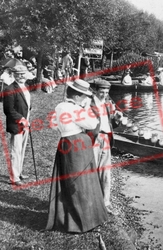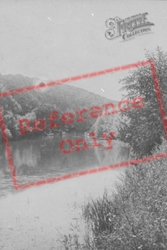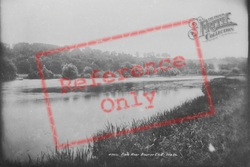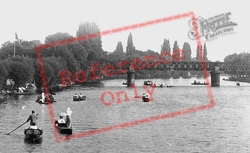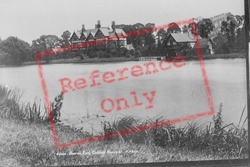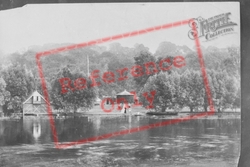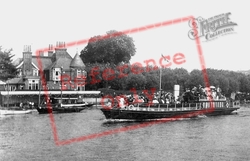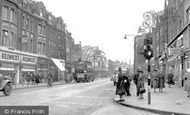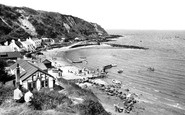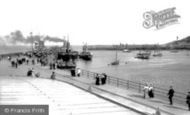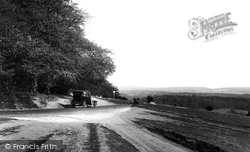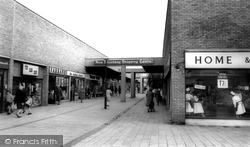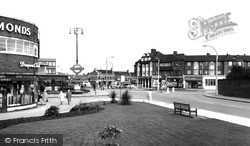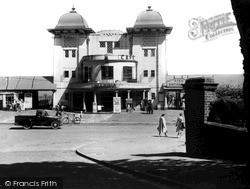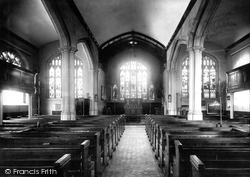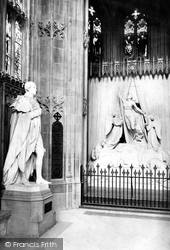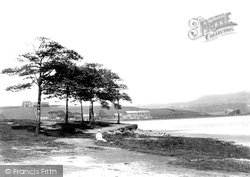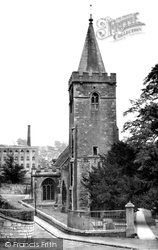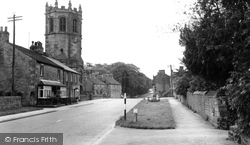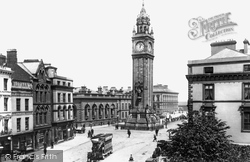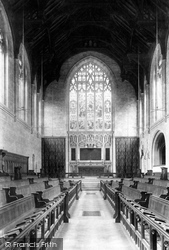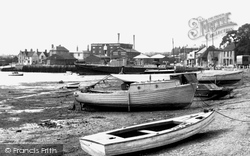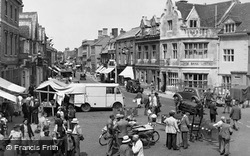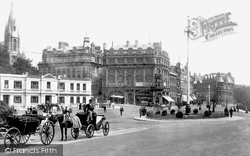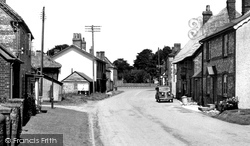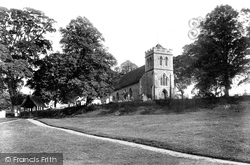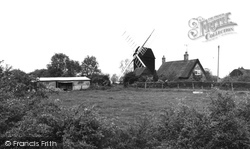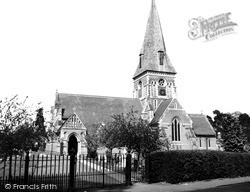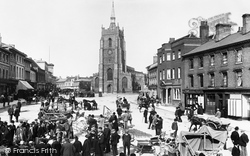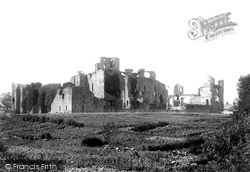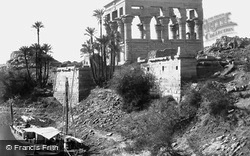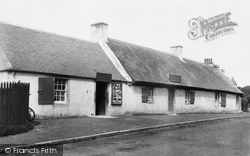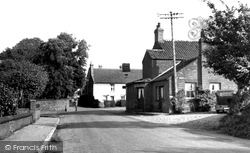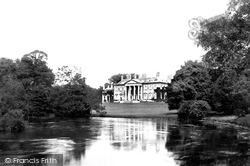Places
5 places found.
Those places high-lighted have photos. All locations may have maps, books and memories.
Photos
58 photos found. Showing results 41 to 58.
Maps
22 maps found.
Books
Sorry, no books were found that related to your search.
Memories
1,553 memories found. Showing results 21 to 30.
My Early Years In Salford
I was born in Salford, at 15 School Street in 1951. My first school was Stowells Memorial, I think the headmistress was a Miss Dent. There was a butchers shop one the corner with the same name as our family, but I don't think ...Read more
A memory of Salford in 1951 by
The Capitol Cinema
I used to look forward to the weekend so I could pay my 'tanner' and go to the Saturday morning pictures at the Capitol (now Marks & Spencer I believe). I was born and raised in Barking, Sutton Road (off Movers Lane). Went to ...Read more
A memory of Barking in 1956 by
The Sompting General Supply Stores.
I have a photocopy of a photograph of the General Supply Stores, Sompting, dated around 1913, showing the owners, J and A White, proudly standing outside, one with a little dog at his feet, the other holding his ...Read more
A memory of Sompting in 1910 by
Nefyn Beach
The beach cafe shown in the photo entitled 'the anchorage' was owned and run by my aunts, the Misses Miriam and Evelyn Wales, whose father moved to Morfa Nefyn in the late 1800s to take charge of the cable station linked to Ireland. Also my ...Read more
A memory of Nefyn in 1940 by
Memories Of Benson
My memories of Benson started in 1946/7 when we moved to Sunnyside, which in those days did not have the recreation field. Nor did the village have street lighting apart from a couple in the High Street, one of which was on the wall ...Read more
A memory of Benson in 1947 by
Reminiscing
I was born in NW London. My first visit to Woburn Sands was about 1950 when my Uncle Ted and Aunt Ada moved here. They lived at the 'Dene' Aspley Hill. Aunt Ada did the housework for Mrs Russell the owner of the 'Dene' and my uncle ...Read more
A memory of Woburn Sands in 1950 by
Reedham Orphanage
My father died just before I was born and my mother had to put my brother and I into Reedham orphanage. I was still on a potty as I remember complaining that I was now old enough to go on the toilet and have some privacy. I remember ...Read more
A memory of Purley in 1956 by
Peckham The Fishmonger
My great grandfather, Henry William Peckham was a fishmonger, mentioned in Brown's Directory of 1882. He is reputed to have owned some land on the coast/beach/promenade at Douglas. Here fish was sold 'on the front' from a ...Read more
A memory of Douglas by
Howards Close
I was born at 23 Howard Close in October 1963. It was a lovely place for children to grow up. A large green and a playground, little traffic, dogs and other residents. Everyone looked out for one another. I attended the infant ...Read more
A memory of Walton on the Hill in 1963 by
A Wonderful Time
My family and I lived at 157 Wilmslow Road, it had just been built so all of us who lived on the road moved in around the same time, and it was a wonderful. My parents George and Thelma Goddard, had the three of us then, Georgina, ...Read more
A memory of Handforth in 1955 by
Captions
123 captions found. Showing results 49 to 72.
This is one of the county's most famous beauty spots on the crest of the North Downs, providing breathtaking views across the Weald to the South Downs and Littlehampton, and into Sussex from its height
More shopper-friendly enclosed arcades have taken the place of the violently unattractive centres, and no-one can mourn their passing.
Behind the high brick wall to the extreme right of the photograph is Southgate House of the late 18th century, built in the form of a neo-classical villa by Samuel Pole; a short distance along the Bourne
The 600-capacity New Pavilion opened in May 1929 with attendant shops, tea lounges and terrace.
He is lying on a couch with smaller children around mourning him, and angel putti lift him by his hand.
The Chapel abounds with monuments of beauty and dignity. They include the Princess Charlotte Memorial, 1817, by Matthew Cotes Wyatt, which combines the sensational with the chaste.
The 104 acres of the lake are only 3 miles from Rochdale cen- tre and were a popular rendezvous by the mid 1860s.
The stained glass in the south window has several Netherlands roundels of the 16th century and later. Brasses commemorate the great clothier Thomas Horton and his wife.
St Margaret's church and the village lie in the Lune Valley, 9 miles from Lancaster.
She grieved her loss for the rest of her long life, and the Kingdom mourned with her. She symbolised a nation that was the great maritime empire-builder and the workshop of the world.
Three additional bays at the west end designed by Charles Blomfield were completed in 1926 to give seating for more than 500 boys.
Humanity ordained that the soldiers received basic nursing care, but many of them could not be nursed back to health, and died in a foreign land without family to mourn them.
Bourne, at the junction where two Roman roads met, had a Roman station to guard the Car Dyke, the great Roman dyke 56 miles long and still surviving for long stretches.
Bournemouth's Square stands at the very heart of the town astride the River Bourne.
A neat Austin 8 is here heading for St Mary Bourne. Joseph Blount from nearby Rookery Farm had a horse called Tinker which could be hired to help carts up Hurstbourne Hill.
Here we see another church in an attractive location near the small village of Bekesbourne, which contains 18th-century cottages and some modern housing.
A windmill was first recorded in Bourn in 1279. This post mill is thought to date from the 17th century, and is perhaps the oldest working post mill in the country.
The 1893 reredos is by Pearson, and the church has a remarkable painting of The Mourning of Christ after Van Dyck, the original of which hangs in the Berlin gallery.
The artist Thomas Gainsborough was born in Sudbury in a former 16th century inn, and he lived and worked here for many years.
The castle was originally a motte and bailey. The stone keep was built in 1170, with the stone curtain walls and improved living quarters being added shortly afterwards.
Epsom Downs with its close-cropped turf and easy access from London was the place for it.
Robert Burns was born here on 25 January 1759. The cottage was rebuilt by the poet's father and later became an inn.
The name of this inn is the Hero, after the most famous inhabitant of the Burnhams: Horatio Nelson, born in the rectory of nearby Burnham Thorpe, and later to become England's greatest admiral, and victor
Situated to the south of the town, overlooking the Test, Broadlands is an imposing porticoed house remodelled in classical style by 'Capability' Brown and John Holland in the mid 18th century.
Places (5)
Photos (58)
Memories (1553)
Books (0)
Maps (22)




